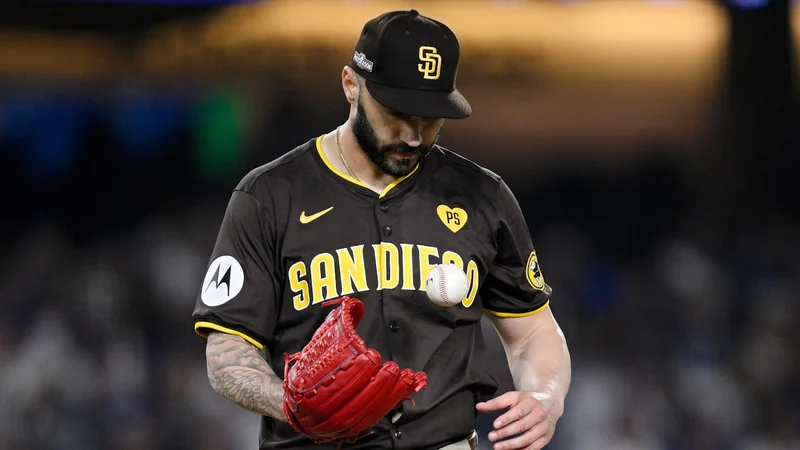The Dodgers' 2025 Payroll Blueprint: Analyzing the Strategy and Its League-Wide Impact
The Algorithm Behind the Bat
When the first payroll numbers for the 2025 season hit the wire, I saw the headlines and, I’ll admit, I chuckled. “Mets Edge Out Dodgers for Highest Payroll.” On the surface, it’s a classic sports media tidbit—a simple horse race of dollars and cents. The New York Mets at a staggering $323 million, the Los Angeles Dodgers just a breath behind at $321 million. But looking at that number and thinking it tells the whole story is like looking at the Mona Lisa and just seeing a painting of a woman. You’re missing the revolutionary technique just beneath the surface.
The real story, the one that should send a shiver down the spine of every other front office in professional sports, isn’t about who is number one or number two. It’s about how the Dodgers are number two. It’s about the breathtakingly elegant piece of financial engineering they’ve constructed, a system so forward-thinking that it makes traditional nine-figure contracts look like relics from the stone age.
When I first dug into the structure of Shohei Ohtani’s $700 million deal, I honestly just sat back in my chair, speechless. It’s more than a contract; it's a case study in long-term value creation. Ohtani defers $68 million of his $70 million annual salary. For payroll calculations, money is valued on its present-day worth—in simpler terms, a dollar today is worth more than a dollar ten years from now. By pushing the bulk of the payment decades into the future, the Dodgers have performed a kind of financial alchemy. They’ve secured the most valuable asset in the sport while minimizing his impact on their immediate operational budget, giving them the flexibility to continue building around him.
This isn't just about kicking a can down the road. It’s about redesigning the road itself. It's an algorithm for sustained success, a terrifying sign that the Dodgers aren't just playing checkers while everyone else plays chess; they’re building a quantum computer to run simulations for a game no one else has even imagined yet.

A New Operating System for Ambition
What we're witnessing here is a paradigm shift, and it has implications that stretch far beyond the foul lines of a baseball diamond. This contract structure is less like a traditional salary and more like a venture capital fund's equity stake in a generational talent. The Dodgers have essentially become the primary investors in the "Shohei Ohtani" enterprise, creating a financial instrument that allows them to leverage his value now without handcuffing their ability to innovate and acquire other assets for the next decade.
This is the kind of breakthrough that reminds me why I got into this field in the first place. Think about it. This model is a blueprint. What if a biotech startup could use a similar structure to secure a Nobel-laureate researcher for 20 years, deferring the massive salary to align with the long-term payoff of a breakthrough drug? What if a city could fund a massive infrastructure project—a high-speed rail line, a green energy grid—by creating financial instruments that pay out based on the future prosperity the project itself generates? The speed of this is just staggering—it means the gap between a brilliant idea and its execution is closing faster than we can even comprehend because we're finally designing financial systems that operate on the same long-term timelines as truly ambitious goals.
This is a new operating system for ambition. It’s a move away from the brute-force economics of "who can write the biggest check today" and toward the elegant, strategic thinking of "how can we architect a system for a decade of dominance." And that raises some profound questions. When one organization makes a leap like this, how long will it take for others to catch up? And what happens to the ones that can’t? This isn't just a gap in spending; it's a gap in institutional intelligence.
Of course, with any powerful new tool comes a deep responsibility. The very elegance of this model could create chasms of competitive imbalance if it’s only available to the most well-resourced and sophisticated organizations. It forces us to ask whether the frameworks governing our institutions—in sports, in business, in science—are ready for a world where financial engineering can bend time itself.
The Blueprint Is Now Public
The most terrifying thing for the rest of the league isn't the $321 million on the Dodgers' books. It's the quiet hum of the servers and the brilliant minds in their front office who saw the rules of the game not as constraints, but as a physics engine to be mastered. They didn't just spend money; they manipulated financial gravity. They're not just building a baseball team for 2025; they're beta-testing the organizational model of the 2030s. Everyone else is still playing for this season. The Dodgers are playing for the next decade, and they’ve just shown everyone the source code. The real game is just beginning.
Tags: dodgers payroll 2025
The IMF's $4.5 Trillion Bank Warning: What the Data Reveals About Systemic Risk
Next PostPudgy Penguins: The Price Crash and What's Really Going On
Related Articles
